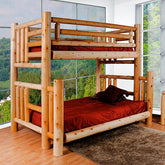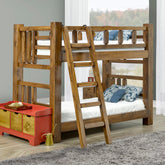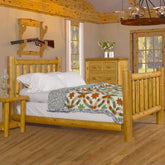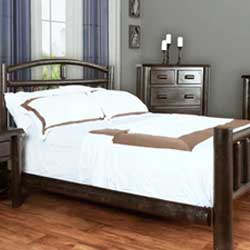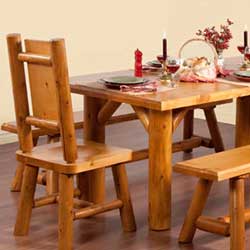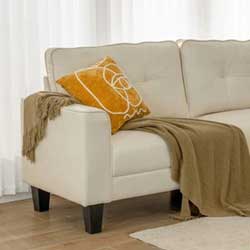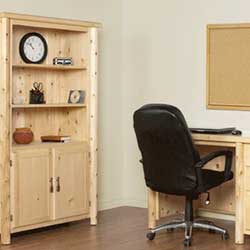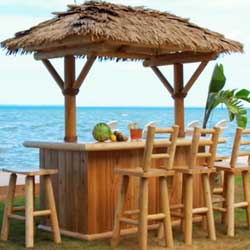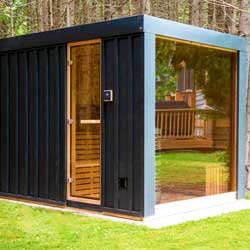Clear vs. Knotty Red Cedar - What's The best Wood For Your Sauna?

Nestled in the breathtaking landscapes of North America's Pacific Northwest, Western Red Cedars are towering giants that fill the lush rainforests. Their sheer beauty and impressive size make them highly sought after wood for the construction of exquisite furniture.
Among the diverse family of cedar trees, each variety has unique characteristics that leave their mark on the appearance of their lumber. In this blog, we're diving deep into the world of Clear and Knotty Cedar, unraveling their distinctive traits, and guiding you through the process of choosing the perfect wood to match your specific needs and personal preferences.
Let's explore the differences that set these cedars apart and help you make an informed choice for your next project.
Clear vs Knotty Red Cedar
• Clear Red cedar doesn't have the knots where the branches came out of the tree, which rot a bit quicker and aren't as water resistant as the rest of the wood (expect a life of about 25 years with Knotty Cedar, and 40+ years with Clear Red Cedar).
• Clear red cedar smells stronger and the smell will last longer (though the benches are made with Clear Red Cedar with both models, which will retain that smell even with the Knotty Red Cedar
• Aesthetically, the Clear Red Cedar is more elegant, and the Knotty Red Cedar is more rustic
While both types of cedar can produce high-quality and durable wood furniture, there are a few differences to consider when deciding which is best for your goals. Clear cedar, as the name suggests, is meticulously selected and milled to be free of knots and other imperfections, offering a smooth, elegant finish. It's favoured for high-end projects due to its refined appearance and luxurious feel. In contrast, knotty cedar showcases the natural knots and blemishes on its surface, adding a rustic charm and unique character to the wood. While clear cedar exudes sophistication and a clean look, knotty cedar embraces its imperfections, making it an excellent choice for those seeking a more natural, textured aesthetic. The choice between clear and knotty cedar ultimately boils down to personal preference, budget, and the desired ambiance for the specific project at hand.
Knotty Red Cedar
The knotty red cedars trees are a second generation tree, approx 75-100 years old. These trees are harvested in the interior/mainland of British Columbia and on average produce up to 250 board feet of lumber. 2 of these trees will produce enough lumber for a Pod or Luna Sauna.
**All of our cedar lumber is sustainably harvested from Vancouver Island.

What is Knotty Cedar?
Knotty Cedar is all about embracing natural imperfections. This unique variety of Western Red Cedar displays knots on the face of the lumber, which are the lasting imprints of where branches once grew. These knots can vary in appearance, from tight and inter-grown to loose and encased, ensuring each piece of knotty cedar is genuinely one-of-a-kind. The charming character and personality of knotty cedar shine through in every project it graces, making it an excellent choice for those seeking a wood that tells a story of natural growth and resilience. Plus, it's not just about looks; knotty cedar boasts impressive durability, especially in the case of select tight knotty wood, making it suitable for both indoor and outdoor projects. And, if you're watching your budget while dreaming of a beautiful deck or cabin finish, knotty cedar's cost-conscious nature can make your aspirations a reality.

What is a wood knot?
Wood knots are distinctive features found in lumber that originate from the natural growth of a tree. These knots are essentially remnants of branches that once sprouted from the tree's trunk. When a branch is cut or broken off, the tree heals itself by sealing the wound with layers of new wood, forming a knot in the process. The appearance of knots can vary widely, from tight and compact to loose and open, and they often differ in colour and texture compared to the surrounding wood. While some view knots as imperfections, others appreciate them for the unique character and rustic charm they bring to wooden surfaces. Knots can affect the wood's strength and can sometimes pose challenges in woodworking, but they also add visual interest and authenticity to the finished product.

Clear Red Cedar
Clear Western Red Cedar trees, with their impressive longevity, typically reach the remarkable age range of 250 to 450 years. Over centuries, these majestic trees slowly grow to their full potential, each year adding a new layer of growth rings that contribute to the wood's durability and character. The astonishing fact is that these ancient giants yield an abundant supply of lumber, often reaching up to 150,000 board feet per tree. To put this into perspective, the lumber produced from just one of these venerable cedars can be employed in crafting a multitude of items. For instance, it's enough to construct a staggering 214 Panoramic Barrel Saunas, showcasing the immense capacity and resourcefulness that these trees offer in the world of woodworking and craftsmanship.





